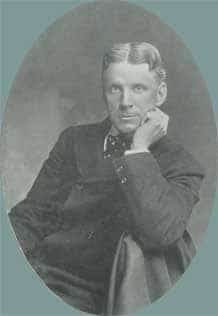This Day in Presbyterian History:
Seeing My Father’s world
 He never even heard the hymn which he wrote, sung by a choir or congregation. He never heard it as an instrumental musical piece. That is because he wrote it as a poem in 1901 and it wasn’t published until 1916, set to music for the Presbyterian songbook for Children. But more than children have made it a favorite of theirs.
He never even heard the hymn which he wrote, sung by a choir or congregation. He never heard it as an instrumental musical piece. That is because he wrote it as a poem in 1901 and it wasn’t published until 1916, set to music for the Presbyterian songbook for Children. But more than children have made it a favorite of theirs.
Maltbie Davenport Babcock was born on August 3, 1858 in Syracuse, New York of wealthy and prominent parents. With an amiable personality and an outstanding mind, he soon began to make the proverbial waves at the University of Syracuse. An outstanding athlete combined with a skill in music caused him to be chosen to be the director of the University orchestra. He could have been anything in life, but he chose the ministry, and specifically the Presbyterian ministry.
Studying at Auburn Theological Seminary in New York, and graduating in 1882, he was ordained and became the pastor of the First Presbyterian Church. It was there that the words of this poem and eventually the hymn of “This is My Father’s World” came into being. It was said that he loved to walk in the morning and see the beauty of God’s creation. In fact, he would say to anyone he met that “I am going out to see my Father’s world.”
His next place of ministry took place in Brown Memorial Presbyterian Church in Baltimore, Maryland. There, he had such an impact among the students of nearby Johns Hopkins University, that the educational institution set up a special room on campus so he could minister to the student body. He had a unique manner of presenting spiritual truths in new and fresh ways.
With the death of Henry Van Dyke at the Brick Presbyterian Church in New York, Rev. Babcock went to New York City for his third charge. It was there that they sent him, after a time of labor, to the Holy Land. In the midst of that trip, he suddenly died on May 18, 1901. His wife Katherine waited until 1916 before she published his poems. This one on His Father’s Word was set to music by Franklin L. Sheppard in 1915. It originally had sixteen verses, but he chose only three verses, which are found in the red Trinity hymnal on page 111. In the blue Trinity hymnal, it is found on page 109. We need to reflect often on God’s creation. Or by Pastor Babcock it, this is our Father’s world.
Words to Live By: Found on the flyleaf of Pastor’s Babcock’s Bible is the following quote. It says, “Committed myself again with Christian brothers to unreserved docility and devotion before my Master.” Whether this was at a conference or even a small group of Christians, we don’t know. But Maltbie Babcock’s life was committed to Christ during his three pastorates. To him, “though the wrong seems oft so strong, God is the Ruler yet.” With that as his comfort, he could and did go forward to serve His heavenly Father.
Through the Scriptures: Habakkuk 1 – 3
Through the Standards: The seventh commandment: sins forbidden
WLC 139 — “What are the sins forbidden in the seventh commandment?
A. The sins forbidden in the seventh commandment, besides the neglect of the duties required, are adultery, fornication, rape, incest, sodomy, and all unnatural lusts; all unclean imaginations, thoughts, purposes, and affections; all corrupt or filthy communications, or listening thereunto; wanton looks, impudent or light behavior, immodest apparel; prohibiting of lawful, and dispensing with unlawful marriages; allowing, tolerating, keeping of stews (i.e. prostitutes), and resorting to them; entangling vows of single life, undue delay of marriage, having more wives or husbands than one at the same time; unjust divorce, or desertion; idleness, gluttony, drunkenness, unchaste company; lascivious songs, books, pictures, dancings, stage plays; and all other provocations to, or acts of uncleanness, either in ourselves or others.”
WSC 72 — “What is forbidden in the seventh commandment?
A. The seventh commandment forbids all unchaste thoughts, words, and actions.”
Image source : Frontispiece portrait in Maltbie Davenport Babcock: A Reminiscent Sketch and Memorial, by Charles E. Robinson, D.D. New York: Fleming H. Revell Company, 1904.

Just an observation about hymnals: hymn numbers are not page numbers. Some times there is more than one hymn on a page and sometimes a hymn fills more than a single page. You may note then, if a hymnal has page numbers, that the hymn number and the page number are not necessarily the same.